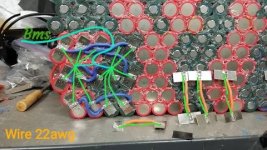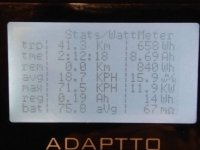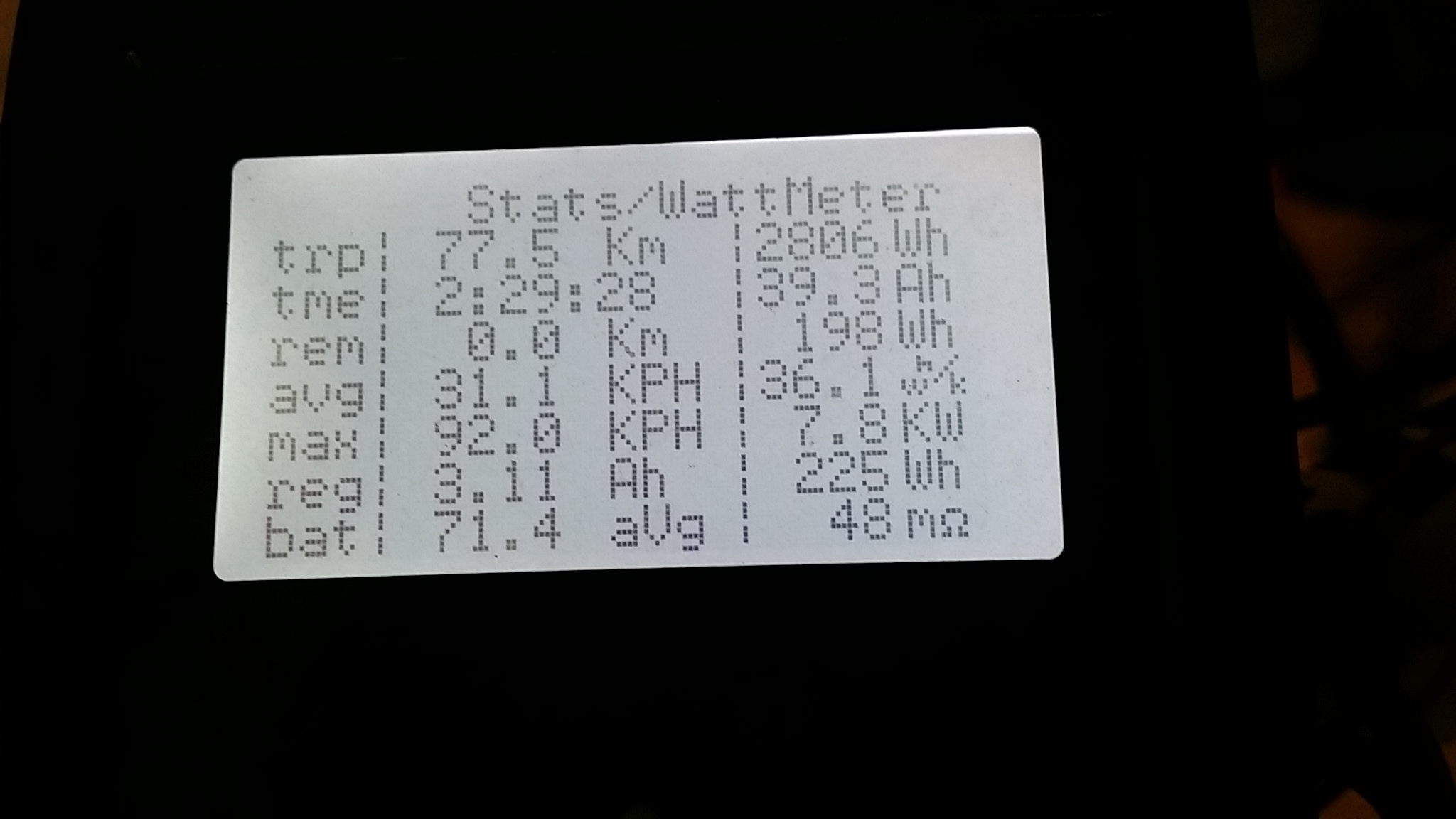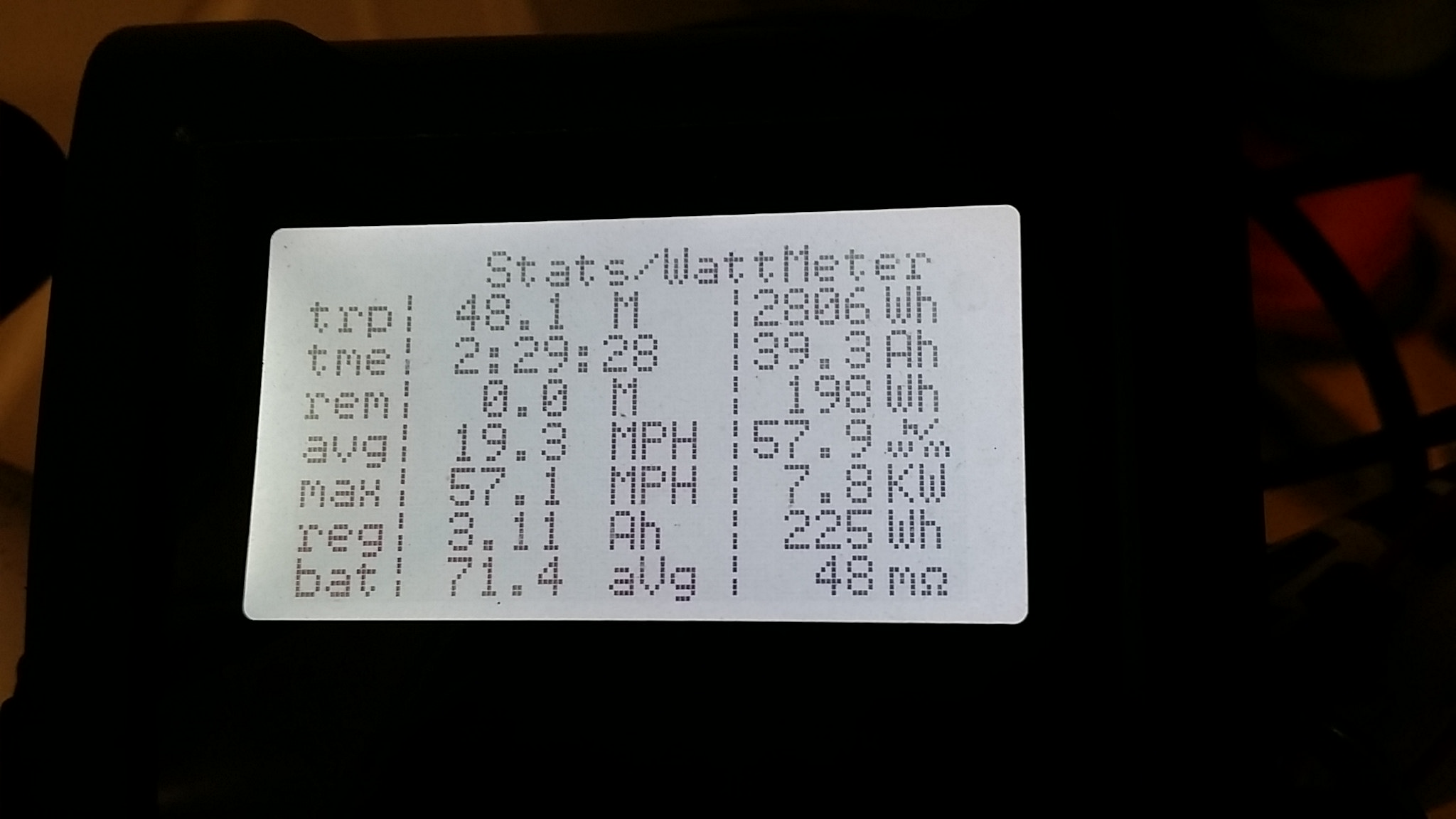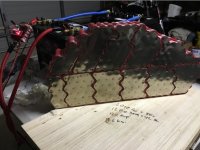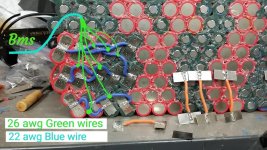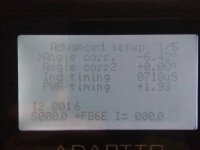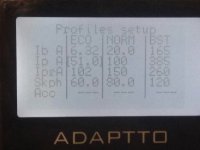Maderensto
10 mW
Thank you very much for the detailed information.
I know that at least it is the third time you explain it, but now it has become clear to me that it is not easy to fit 280 cells into this frame.
I have the Max-E.
8C-9C It would be just in case.
With the firmware locked (for now) I do not think it reaches 4.5C of discharge in phase amps, but better to go Increase expectations so that the cell wear is minimal in the long run and lasts a little longer.
I hope it lasts for at least 5 years, treating the battery well, charging max. of cell at 4.10v (at 0.5C or less) and discharge max. of cell at 3.6-3.5v (2A approx. Up to 4.5C approx at maximum peaks) .
With the first autodetection 2 years ago I got my best mark, i obtained 13,4kw. I do not know what configuration I had, I do not remember well.
I touched and touched the configuration.
Finally the Boost mode I was work at 60-62km / h (I don't know the kw, I forgot) but I settled for that.
After manually calibrating the motor, now reached 8,6kw (Probably they can raise more the kw, I only tried to accelerate in slight slopes, I would have to try to accelerate in very inclined zones to see if the demand of energy goes up.) at 71km / h on land in Boost mode, perfect speed to feel the adrenaline on dirt roads, but with great care, more than for me, for others (People who may appear suddenly, we have to be respectful, if we want to be respected).
Have i found this hot glue gun, I was looking for one that will make it easier to put the glue inside, If the tip will enter more than half, it would be a triumph and it would save me a lot of work, but I have doubts that he is going to enter between the cells.

Maybe you can fit a reduction of small metal with a thinner tube, who knows.
The correct would be to place a tube that enters and do not damage cells, and that be a good conductor of temperature for the glue to pass and not get stuck when cooling.
I will look at options.
Yesterday I did not mention this.
I bought the Q76r with a friend who also bought another equal ( Frame,Motor Qsv2, Adaptto max-e) minus the top sticker in green, the suspensions or shock absorbers, and various components (saddle, seat post, brake, pedals, handlebars).
I asked him if he could show his construction, he said yes.

He also wants to update his battery, but he is considering going to 13p to avoid touching the frame.
I continue with my own thoughts, I will go with 14p, I'm going to need a stroke of luck to get it inside the frame without damaging the protection of the cell and avoid producing a serious short circuit.
I know that at least it is the third time you explain it, but now it has become clear to me that it is not easy to fit 280 cells into this frame.
I have the Max-E.
8C-9C It would be just in case.
With the firmware locked (for now) I do not think it reaches 4.5C of discharge in phase amps, but better to go Increase expectations so that the cell wear is minimal in the long run and lasts a little longer.
I hope it lasts for at least 5 years, treating the battery well, charging max. of cell at 4.10v (at 0.5C or less) and discharge max. of cell at 3.6-3.5v (2A approx. Up to 4.5C approx at maximum peaks) .
With the first autodetection 2 years ago I got my best mark, i obtained 13,4kw. I do not know what configuration I had, I do not remember well.
I touched and touched the configuration.
Finally the Boost mode I was work at 60-62km / h (I don't know the kw, I forgot) but I settled for that.
After manually calibrating the motor, now reached 8,6kw (Probably they can raise more the kw, I only tried to accelerate in slight slopes, I would have to try to accelerate in very inclined zones to see if the demand of energy goes up.) at 71km / h on land in Boost mode, perfect speed to feel the adrenaline on dirt roads, but with great care, more than for me, for others (People who may appear suddenly, we have to be respectful, if we want to be respected).
Have i found this hot glue gun, I was looking for one that will make it easier to put the glue inside, If the tip will enter more than half, it would be a triumph and it would save me a lot of work, but I have doubts that he is going to enter between the cells.

Maybe you can fit a reduction of small metal with a thinner tube, who knows.
The correct would be to place a tube that enters and do not damage cells, and that be a good conductor of temperature for the glue to pass and not get stuck when cooling.
I will look at options.
Yesterday I did not mention this.
I bought the Q76r with a friend who also bought another equal ( Frame,Motor Qsv2, Adaptto max-e) minus the top sticker in green, the suspensions or shock absorbers, and various components (saddle, seat post, brake, pedals, handlebars).
I asked him if he could show his construction, he said yes.

He also wants to update his battery, but he is considering going to 13p to avoid touching the frame.
I continue with my own thoughts, I will go with 14p, I'm going to need a stroke of luck to get it inside the frame without damaging the protection of the cell and avoid producing a serious short circuit.


